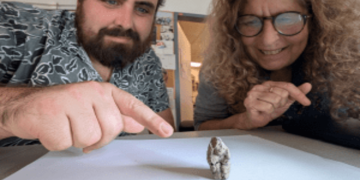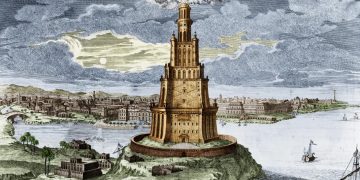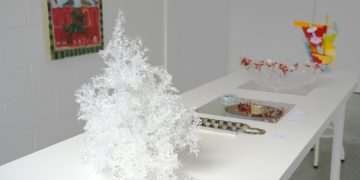THE eruption of Mount Vesuvius nearly 2,000 years ago is largely considered to be one of the worst in history – incinerating or suffocating thousands of people living at the base of it.
And archaeologists have just uncovered the heartbreaking final moments of a young family’s bid to survive.

During a recent excavation of a house in Pompeii, archaeologists found the remains of four people, including a child, in a barricaded room[/caption]

A bed had been moved against the bedroom door, in what was likely the family’s last effort to escape the searing hot ash that was flooding the city[/caption]

The findings, published in Scavi di Pompei, offer an insight into the people who knew their lives were in trouble when Mount Vesuvius erupted in 79 AD[/caption]
During a recent excavation of a house in Pompeii, archaeologists found the remains of four people, including a child, in a barricaded room.
A bed had been moved against the bedroom door, in what was likely the family’s last effort to escape the searing hot ash that was flooding the city.
“In this small, wonderfully decorated house, we found traces of the inhabitants who tried to save themselves, blocking the entrance to a small room with a bed,” Gabriel Zuchtriegel, director of the Archeological Park of Pompeii, said in a statement translated from Italian.
The findings, published in Scavi di Pompei, offer an insight into the people who knew their lives were in trouble when Mount Vesuvius erupted in 79 AD.
“Excavating and visiting Pompeii means coming face to face with the beauty of art but also with the precariousness of our lives,” added Zuchtriegel.
The house, named casa di Elle e Frisso, was first uncovered in 2019, during the excavations of a neighboring site called the House of Leda and the Swan.
It was an ordinary day when Mount Vesuvius, a major stratovolcano, erupted and entombed the cities of Pompeii and Herculaneum in ash.
This type of volcano is known for having extremely violent eruptions due to its magma containing higher levels of gas.
When Vesuvius first exploded, it sent a massive column of ash and volcanic rock into the air.
This giant plume then poured down onto nearby towns, crushing houses and suffocating residents.
A series of pyroclastic flows – fast-moving, searing avalanches of gas, ash and volcanic debris – then flooded through nearby towns and cities.
Casa di Elle e Frisso, also known as the house of Helle and Phrixus, was a decorated home, with paintings and a banquet hall.
Researchers believe the home belonged to a middle or upper class Roman family.
And a lack of decorations and elements suggests they might have been renovating at the time of the eruption.
The destruction of Pompeii – what happened in 79 AD?

- Pompeii was an ancient Roman city near modern Naples, in the Campania region of Italy.
- It was destroyed, along with the Roman town of Herculaneum and many villas in the surrounding area, and buried under volcanic ash in the eruption of Mount Vesuvius in 79 AD.
- The violent explosion killed the city’s inhabitants, with the site lost for around 1,500 years until its initial rediscovery in 1599 and broader rediscovery almost 150 years after that.
- The thermal energy released from Vesuvius was said to be a hundred thousand times that of the nuclear blasts at Hiroshima-Nagasaki.
- The remains beneath the city have been preserved for more than a millenium due to the lack of air and moisture in the ground.
- During excavations, plaster was injected into the voids in the ash layers that once held human bodies, allowing scientists to recreate their exact poses at the time of their deaths.
- Mount Vesuvius is arguably the most dangerous volcano on earth.
- It had been inactive for almost a century before roaring back into life and destroying Pompeii.
- Since then, it has exploded around three dozen more times – most recently in 1944 – and stands in close proximity to three million people.
- Although its current status is dormant, Vesuvius is an “extremely active” and unpredictable volcano, according to experts.
- To this day, scientists are finding cultural, architectural and human remains on the banks of Mount Vesuvius.
- Excavations at thermal baths in Pompeii’s ruins in February revealed the skeleton of a crouching child who perished in the 79 AD eruption.
One painting that was found depicts the mythological twins Phrixus and Helle fleeing from their stepmother on a magical ram with a golden fleece, before Helle fell to her death in the waters below.
It’s this painting that gave the house its name.
Other details found by archaeologists include a water basin, a bronze amulet thought to be worn by the child, bronze scales, bronze cooking pans and a hole in its roof to collect rainwater.
Yet this hole is likely what let the deluge of ash swamp the home.
“This is because the lapilli, the volcanic stones that risked invading the space, entered through the opening in the roof of the atrium,” Zuchtriegel said.
“They didn’t make it, in the end the pyroclastic flow arrived, a violent flow of very hot ash that filled here, as elsewhere, every room, the seismic shocks had already caused many buildings to collapse.”

The house gets its name from this painting, which depicts the mythological twins Phrixus and Helle fleeing from their stepmother on a magical ram with a golden fleece[/caption]

Casa di Elle e Frisso, also known as the house of Helle and Phrixus, was a decorated home, with paintings and a banquet hall[/caption]

Thousands of people died in Pompeii on the day of the eruption[/caption]





























